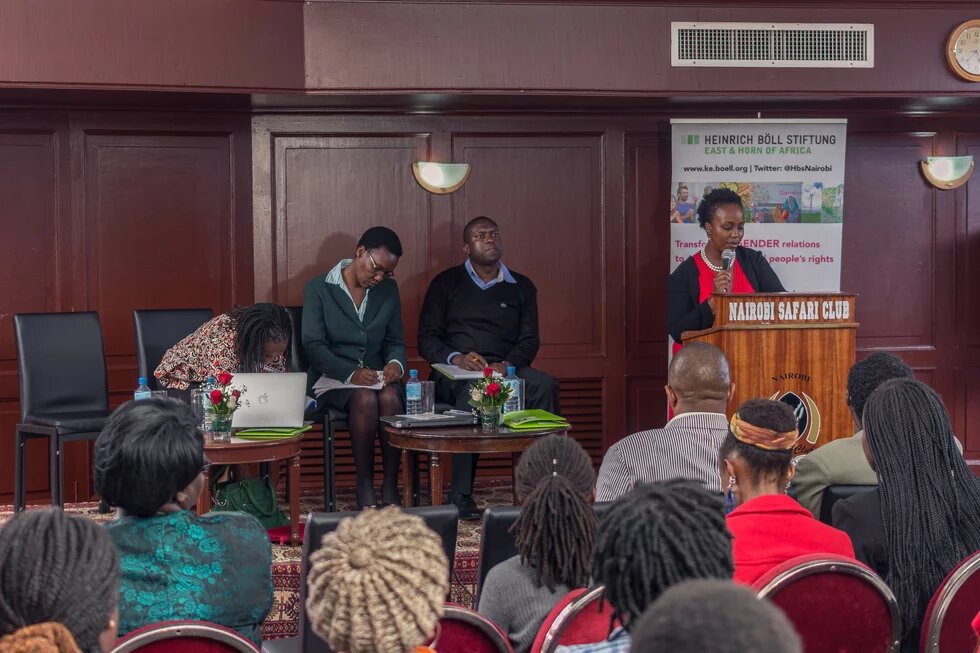
In September 2015, the United Nations General Assembly met in New York, USA, to deliberate on what was to succeed the Millennium Development Goals (MDGs), as their fifteen years’ term came to a close. Thus gathered, the world signed the Sustainable Development Goals (SDGs) as the new framework for development. The SDGs were introduced with the hope that they would put an end to inequality in all its forms. Goal 5 on Gender Equality and the Empowerment of Women and Girls was envisioned to see to the levelling of the playing field between the sexes. This provided the backdrop on which Heinrich Boll Stiftung’s Nairobi office organized the October Gender Forum.
On Thursday, 29 October at a city hotel, in a room filled to the brim, three discussants – Martha Tureti (National Coordinator, Gender and Disability, World Vision Kenya), Esther Mwaura (Director, GROOTS Kenya) and Bertha Rinjeu (Researcher and Journalist) were charged with breaking down Goal 5. Tureti headed off the discussion which was ably facilitated by Cyprian Nyamwamu, a Gender and Human Rights expert, by giving the background to Goal 5.
Tureti posed important questions on the country specific implementation strategies for the SDGs and went on to list the eight targets of this goal. Mwaura placed the SDGs directly in the path of Africa’s developmental vision, “Africa 2063” and the Common Position for Africa. She insisted that gender mainstreaming was essential as women’s inclusion in urban development, the prioritising of community needs and ownership of and control of land would ease implementation.
Rinjeu charged those present in the room with the responsibility of making sure the SDGs are implemented, especially young women on Goal 5. She also brought to mind the political structures that inform and create policy and which would affect the adoption and implementation of the SDGs. Finally, Rinjeu urged active citizens to keep their leaders accountable by voting consciously and being involved in Public Participation. The forum closed with an open question and answer session.
While it may not always be as easy to gather public opinion on High-Level decision making, public discourse on the discriminatory nature of the narratives surrounding women and girls display the urgency for such a goal. Patriarchy, harmful cultural practises, institutionalised sexism, underpayment and underemployment of women and girls, higher rates of woman-targeted gender-based violence, higher instance of women bearing the burden of unpaid care work, restricted access to education for women and girls, limited access to Sexual and Reproductive Health and Rights, and less access to justice skew the field in favour of men.
Worse, under-registration of women and girls in areas where movement of women and girls is restricted by religion or culture jumbles up statistics on the provision of services to this section of the population. This and the fact that in half a century of centralised government in Kenya development followed political whim and the economic will of the ruling class leaves women in over ten counties far outside the purview of guaranteed rights.
At the crux of it, however, is lack of information, where information tends to be outdated, incorrect or simply missing. For Goal 5 to be fully implemented, women and girls must be aware of their rights. They must know where to access healthcare and how to get justice. They must strike a balance between the need for cultural involvement and self-preservation. Yet, they cannot do this alone. Men and women, entire communities must come together and be the example they would want to emulate.
Author: Bertha M. Rinjeu


